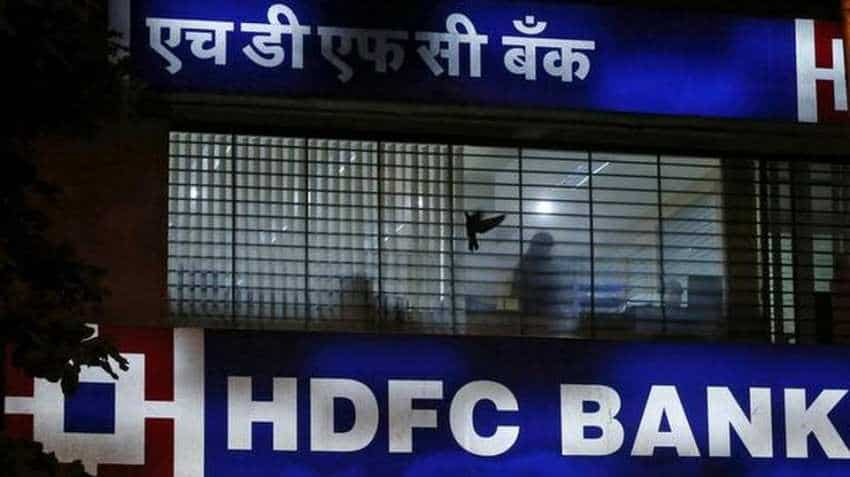Should you buy HDFC Bank stock? Check detailed analysis here
Leading private sector lender HDFC Bank share fell close to 3 percent to 2306.90. HDFC Bank’s Q1FY20 was marked by softening credit growth.

Leading private sector lender HDFC Bank share fell close to 3 percent to 2306.90. HDFC Bank’s Q1FY20 was marked by softening credit growth (17% YoY; 24% in past three quarters). This was led by moderating auto loans, run-down of a few corporate assets and base effect in the unsecured segment. Also, higher provisioning in unsecured lending and increased provisioning for agriculture loans led to higher-than-expected credit cost. Brokerage Edelweiss said sustained momentum in net interest income (NII) (NIM at 4.3%) coupled with operating expenses growth at sub-20 percent spurred earnings 21 percent to Rs 55.7 billion (Rs 5,570 crore).
Key monitorables: a) Moderating loan growth amid weak underlying asset growth; and b) Increase in provision in the unsecured segment. However, best-in-class franchise, marginal stress and strong capital position place it in a sweet spot, it said. The brokerage maintains ‘BUY’ with a target price of Rs 2,785.
Softening credit growth: Key monitorable
Loan growth was softer than expected (17% YoY versus 24% YoY) with a lower level growth in retail and corporate books. Retail credit slowed further (sub-17%) following lower growth in the vehicle segment and growth in unsecured piece normalising on a higher base. Softer growth in non-retail (up 18% YoY, albeit due to some run-offs) disappointed as market opportunity (lower competition) and lower stress pool provided the bank with relatively better opportunity. Armed with strong capital, scale benefits, wide distribution and faster total asset turnover (TAT), HDFC Bank is well placed to garner maximum benefits of churn in competition. However, pick up in growth to 20 percent-plus will be key monitorable, the brokerage said.
Asset quality steady; agriculture non-performing loan continues to be volatile:
Slippages rose to 2 percent (Rs 42 billion versus Rs 36 billion in Q4FY19) driven by agri slippages (already red flagged), excluding which gross non-performing loan (GNPL) were steady at 1.17 percent. It said that higher provisions on unsecured book warrant a closer look (as growth could normalise further).
While we still don’t expect major stress in unsecured segment, possibility of stress in pockets can't be ruled out due to: a) increased frequency of borrowing; and b) over leveraging as highlighted by a few industry reports. However, the bank’s focus on existing/salaried customers and strong risk management practices lend comfort.
Outlook and valuation:
Despite softening growth the brokerage expects the bank to clock 23 percent earnings (CAGR) over FY19–21E and sustain superior return ratios (RoA of 2%) led by: i) best-in-class liability franchise; ii) productivity improvement from digital focus; and iii) marginal stress baggage. Edelweiss maintains BUY on the share.
Get Latest Business News, Stock Market Updates and Videos; Check your tax outgo through Income Tax Calculator and save money through our Personal Finance coverage. Check Business Breaking News Live on Zee Business Twitter and Facebook. Subscribe on YouTube.
RECOMMENDED STORIES

Senior Citizen Latest FD Rates: Know what major banks like SBI, PNB, Canara Bank, HDFC Bank, ICICI Bank are providing on fixed deposits

Gratuity Calculator: Rs 38,000 as last-drawn basic salary, 5 years and 5 months of service; what will be gratuity amount?

Top 5 Small Cap Mutual Funds with best SIP returns in 1 year: See how Rs 25,000 monthly investment has grown in each scheme

Top 7 SBI Mutual Funds With Best SIP Returns in 1 Year: Rs 25,000 monthly SIP investment in No.1 fund has jumped to Rs 3,58,404

SBI 5-Year FD vs MIS: Which can offer higher returns on a Rs 2,00,000 investment over 5 years? See calculations
01:19 PM IST










 HDB Financial Services files draft papers with Sebi for Rs 12,500 crore IPO
HDB Financial Services files draft papers with Sebi for Rs 12,500 crore IPO Axis Direct's Top Stock Picks: HDFC Bank, Tech Mahindra and more | Targets, potential upside
Axis Direct's Top Stock Picks: HDFC Bank, Tech Mahindra and more | Targets, potential upside SBI, ICICI Bank, HDFC Bank mcap rises by almost Rs 70,000 crore in a week
SBI, ICICI Bank, HDFC Bank mcap rises by almost Rs 70,000 crore in a week HDFC Bank Q2 FY25 Results: India's largest private bank beats analysts' forecasts with Rs 16,821 crore profit
HDFC Bank Q2 FY25 Results: India's largest private bank beats analysts' forecasts with Rs 16,821 crore profit iPhone 16 at just Rs 27,000! Here’s how a Reddit user scored the deal - Check details
iPhone 16 at just Rs 27,000! Here’s how a Reddit user scored the deal - Check details